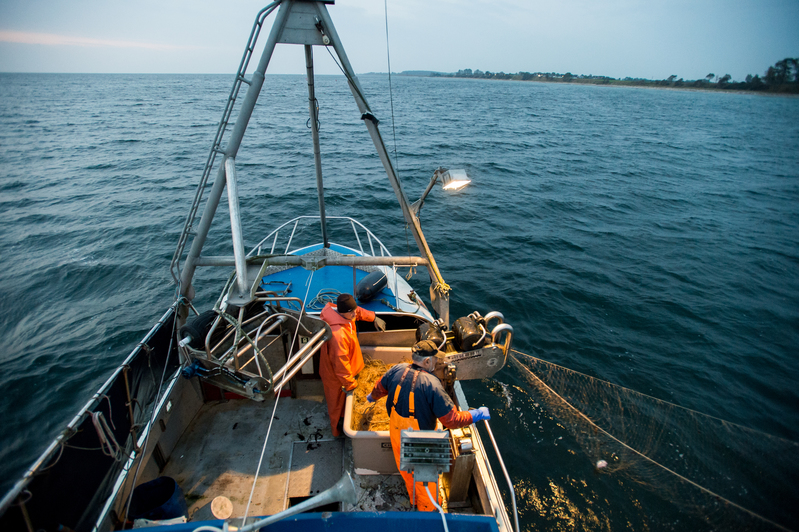The Baltic Sea

Low impact fishermen near Grossenbrode close to Heiligenhafen [Germany]. Fisher Wolfgang Albrecht uses his small fishing boat in the Baltic Sea near Heiligenhafen. The fish mostly caught is cod. © Bente Stachowske / Greenpeace
Baltic fisheries – particularly the iconic cod stocks – are in serious danger. At its peak in 1984, fishers landed more than 440,000 tonnes of Eastern Baltic cod, but today, they bring home less than 40,000 tons a year. Not only are they shrinking in number, but in size – Eastern Baltic cod longer than 45 centimeters have virtually disappeared, and nobody really understands why. Western Baltic cod stocks have also plunged to the brink of collapse – with closures during spawning time, severe cuts to quotas, and calls for an end to bottom trawling to save the fish stocks.
To add insult to injury, even though the landing obligation was phased in to the Baltic Sea in 2015, it is widely acknowledged that there is widespread illegal discarding. EU governments have failed to properly monitor and enforce the discard ban in the Baltic Sea, jeopardising the sustainability of fish stocks and undermining scientific advice, introducing illegal activity into the EU supply chain.
Fisheries Ministers from Baltic Sea countries must:
- Follow scientific advice and set annual fishing limits at ecologically sustainable levels (total allowable catches below maximum sustainable yield);
- Ensure undersized fish are not caught in the first place, by requiring the use of more selective gear types;
- Implement proven, cost-effective monitoring onboard all vessels in segments with an increased risk of discarding (EFCA classification) through the installation of Remote Electronic Monitoring (REM) and closed-circuit video surveillance; and
- Begin re-allocating quota to those in the fishing industry who have minimal impact, such as small-scale passive-gear fishers, and are complying with the law.
Related stories and reports:
Feb 2018: Letter from NGOs to Danish Fisheries Minister Karen Ellemann
Report, November 2017: New Report Exposes How Illegal Discarding of Baltic Fish Fails EU Citizens
October 2017: EU Fisheries Ministers’ All Night Debate Leads To Continued Baltic Overfishing of Cod
August 2017: NGOs call on Baltic Governments to stop driving overfishing
August 2017: How Denmark can make fisheries fair and sustainable
August 2017: Germany’s blind spot for sustainable fisheries
July 2017: Baltic Sea fishing fleets toying with access rights in quest to overfish Baltic Cod
May 2017: Baltic Sea ministers must act to stop Baltic cod collapse
